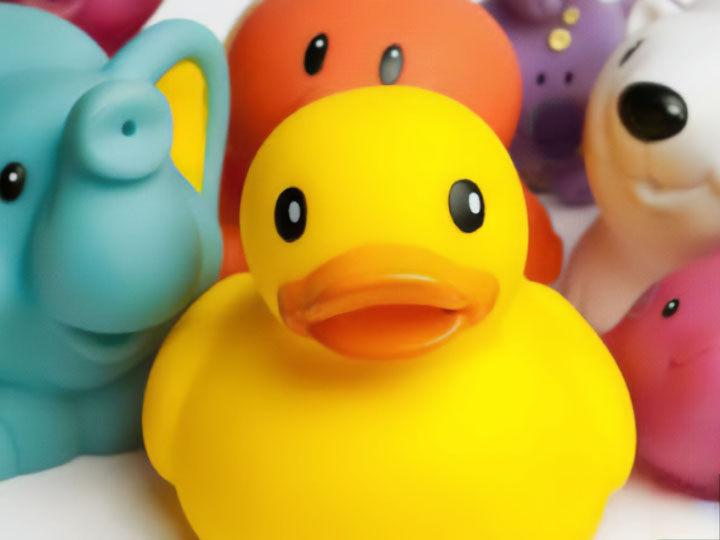Comprehensive toy safety assessments, testing, recordkeeping, compliance and training solutions to help ensure your products meet the obligations and requirements of the EU Toy Safety Directive 2009/48/EC
The EU Toy Safety Directive is a legislative framework established by the European Union (EU) to ensure the safety of toys sold within its member states. The directive sets out essential safety requirements that toys must meet to protect the health and safety of children.
Key objectives of the EU Toy Safety Directive are:
-
Safety Requirements (EN 71 Testing): The directive defines safety requirements that toys must comply with, covering aspects such as mechanical and physical properties, flammability, chemical composition, and specific hazards. These requirements aim to prevent potential risks and hazards associated with toys.
EN 71 consists of a series of standards that cover different aspects of toy safety. The main standards within EN 71 are:
- EN 71-1: Mechanical and Physical Properties: This standard sets requirements for the mechanical and physical properties of toys, such as size, shape, strength, and durability.
- EN 71-2: Flammability: This standard establishes criteria for the flammability of toys, ensuring that they do not present a fire hazard.
- EN 71-3: Migration of Certain Elements: This standard limits the migration of certain potentially harmful elements, such as heavy metals (lead, cadmium, mercury) and certain organic compounds, from toys into children's bodies.
- EN 71-4: Experimental Sets for Chemistry and Related Activities: This standard focuses on the safety requirements for experimental sets and chemistry-related toys, ensuring that children can safely engage in scientific experiments.
- EN 71-5: Chemical Toys (Sets) Other Than Experimental Sets: This standard addresses the safety requirements for chemical toys and sets, which involve the use of chemicals in a controlled manner.
- EN 71-6: Certain Phthalate Esters in Toys and Childcare Articles: This standard restricts the use of certain phthalates, which are chemical additives used in plastic toys, due to their potential health risks.
- EN 71-7: Finger Paints - Requirements and Test Methods: This standard sets requirements and test methods for finger paints to ensure their safety for children.
- CE Marking: Toys that meet the essential safety requirements of the directive are marked with the CE mark. The CE marking indicates that the toy has undergone the necessary testing and assessment procedures and meets the legal requirements for sale within the EU.
- Age Appropriateness: The directive emphasizes the importance of age-appropriate toys. It requires clear labeling on toys indicating the recommended age range and any specific warnings or precautions for safe use.
- Market Surveillance: The directive establishes mechanisms for market surveillance to ensure that toys available in the EU market comply with the safety requirements. It places responsibilities on manufacturers, importers, and distributors to verify and maintain compliance with the directive.
- Notification and Documentation: Manufacturers and their authorized representatives are required to provide a declaration of conformity, technical documentation, and records of tests and assessments to demonstrate compliance with the directive. This information must be made available to the competent authorities upon request.
The general provisions of the EU Toy Safety Directive define what constitutes a toy, outline technical documentation requirements, establish production control and more. Chemical requirements of the EU Toy Safety Directive, which include restrictions on toxic elements, certain fragrances and use of CMR chemicals, were effective July 20, 2013. Intertek developed its EN 71-3 Chemical Testing Solution to address these chemical requirements.
Also outlined in the EU Toy Safety Directive are roles and obligations for toy manufacturers, importers and distributors, as follows:
| Task | Manufacturer | Authorized Representative | Importer | Distributor |
|---|---|---|---|---|
| Technical documentation and carry out conformity & safety assessments | Required | Required | Ensure it's done | Required |
| Sample test marketed toys | Required | Required | Required | Not Required |
| Ensure conformity of series production | Required | Not Required | Not Required | Not Required |
| Affix conformity marking (CE) and product identification | Required | Required | Ensure it's done | Verify it's done |
| Keep the technical documentation | Required | Required | Not Required | Not Required |
| Make available the technical documentation upon request | Required | Required | Required | Required |
| Draw up EC DoC | Required | Required | Not Required | Not Required |
| Add name and address | Required | Required For non-EU mfr |
Required | Verify it's done |
| Keep DoC and make it available | Required | Required | Required | Required |
| Keep records of complaints, non-conforming toys and recalls | Required | Required | Required | Not Required |
| Avoid jeopardizing compliance during storage or transportation | Not Required | Not Required | Required | Required |
| Document in correct language | Required | Required | Required | Required |
Intertek offers a number of EU Toy Directive solutions to help you meet these obligations.
Intertek’s global network of laboratories and offices in 110 countries includes three laboratories in the United Kingdom, France and Germany that have been approved as Notified Bodies by the European Commission to perform EC Type examination, as well as laboratories in the United Kingdom, France and Hong Kong accredited to perform EN 71-3 chemical testing.

